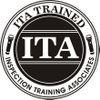The Scope and Purpose of a Home Inspection
Purchasing property involves risk
The purpose of a home inspection is to help reduce the risk associated with the purchase of a structure by providing a professional opinion about the overall condition of the structure. A home inspection is a limited visual inspection and it cannot eliminate this risk. Some homes present more risks than others. We cannot control this, but we try to help educate you about what we don’t know during the inspection process. This is more difficult to convey in a report and one of many reasons why we recommend that you attend the inspection.
A home inspection is not an insurance policy
This report does not substitute for or serve as a warranty or guarantee of any kind. Home warranties can be purchased separately from insuring firms that provide this service.
A home inspection is visual and not destructive
The descriptions and observations in this report are based on a visual inspection of the structure. We inspect the aspects of the structure that can be viewed without dismantling, damaging or disfiguring the structure and without moving furniture and interior furnishings. Areas that are concealed, hidden or inaccessible to view are not covered by this inspection. Some systems cannot be tested during this inspection as testing risks damaging the building. For example, overflow drains on bathtubs are generally not tested because if they were found to be leaking they could damage the finishes below. Our procedures involve non-invasive investigation and non-destructive testing which will limit the scope of the inspection.
This is not an inspection for code compliance
This inspection and report are not intended for city / local code compliance. During the construction process structures are inspected for code compliance by municipal inspectors. Framing is open at this time and conditions can be fully viewed. Framing is not open during inspections of finished homes, and this limits the inspection. All houses fall out of code compliance shortly after they are built, as the codes continually change. National codes are augmented at least every three years for all of the varying disciplines. Municipalities can choose to adopt and phase in sections of the codes on their own timetables. There are generally no requirements to bring older homes into compliance unless substantial renovation is being done.
This is just our opinion
Construction techniques and standards vary. There is no one way to build a house or install a system in a house. The observations in this report are the opinions of the home inspector. Other inspectors and contractors are likely to have some differing opinions. You are welcome to seek opinions from other professionals.
The scope of this inspection
This inspection will include the following systems: exterior, roof, structure, drainage, foundation, attic, interior, plumbing, electrical and heating. The evaluation will be based on limited observations that are primarily visual and non-invasive. This inspection and report are not intended to be technically exhaustive.
Your expectations
The overall goal of a home inspection is to help ensure that your expectations are appropriate with the house you are proposing to buy. To this end we assist with discovery by showing and documenting observations during the home inspection. This should not be mistaken for a technically exhaustive inspection designed to uncover every defect with a building. Such inspections are available but they are generally cost-prohibitive to most homebuyers.
Your participation is requested
Your presence is requested during this inspection. A written report will not substitute for all the possible information that can be conveyed verbally by a shared visual observation of the conditions of the property.
How to Read This Report
Getting the Information to You
This report is designed to deliver important and technical information in a way that is easy for anyone to access and understand. If you are in a hurry, you can take a quick look at our "Summary Page” and quickly get critical information for important decision making. However, we strongly recommend that you take the time to read the full Report, which includes digital photographs, captions, diagrams, videos and hot links to additional information.
The best way to get the layers of information that are presented in this report is to read your report online. This will allow all you to expand your learning about your house. You will notice some words or series of words highlighted in blue and underlined – clicking on these will provide you with a link to additional information.
This report can also be printed on paper or to a PDF document.
Chapters and Sections
This report is divided into chapters that parcel the home into logical inspection components. Each chapter is broken into sections that relate to a specific system or component of the home. You can navigate between chapters with the click of a button on the left side margin.
Most sections will contain some descriptive information done in black font. Observation narrative, done in colored boxes, will be included if a system or component is found to be significantly deficient in some way or if we wish to provide helpful additional information about the system or the scope of our inspection. If a system or component of the home was deemed to be in satisfactory or serviceable condition, there may be no narrative observation comments in that section.
Observation Labels
All narrative observations are colored, numbered and labeled to help you find, refer to, and understand the severity of the observation. Observation colors and labels used in this report are:
- Major Concern:Repair items that may cost significant money to correct now or in the near future, or items that require immediate attention to prevent additional damage or eliminate safety hazards.
- Repair:Repair and maintenance items noted during inspection. Please note that some repair items can be expensive to correct such as re-finishing hardwood floors, but are considered simply repair items due to their cosmetic nature.
- Improve:Observations that are not necessarily defects, but which could be improved for safety, efficiency, or reliability reasons.
- Monitor:Items that should be watched to see if correction may be needed in the future.
- Due Diligence:Observation such as a buried oil tank that may require further investigation to determine the severity and / or urgency of repair.
- Future Project:A repair that may be deferred for some time but should be on the radar for repair or replacement in the near future.
- Efficiency:Denotes observations that are needed to make the home more energy efficient as well as to bring the home up to modern insulation standards. This category typically includes windows and insulation. Other items, such as lighting and appliances, are not inspected for their energy status.
- Completed:Items that were initially an issue but have since been completed.
- Note:Refers to aside information and /or any comments elaborating on descriptions of systems in the home or limitations to the home inspection.
- Description:Detailed description of various aspects of the property noted during the inspection.
Summary Page
The Summary Page is designed as a bulleted overview of all the observations noted during inspection. This helpful overview is not a substitution for reading the entire inspection report. The entire report must be read to get a complete understanding of this inspection report as the Summary Page does not include photographs or photo captions.
Moisture Meter Testing
Where moisture meter testing is indicated in this report a Protimiter Survey Master Dual Function was used.
Summary
Major Concerns
- EG-7 Exterior/Garage:
Overall, this is an old entry porch. Numerous repairs are needed to this porch to ensure safe and reliable performance. I recommend additional inspection and repair of this porch by a qualified general contractor. Examples of observations and defects noted during inspection include:
- The guardrail does not meet minimum modern safety standards: it is too low.
- The guardrail openings are larger than the 4-inches recommended today. This can pose a safety hazard for small children.
- The wall outside the stairs is leaning and likely has concealed water damage.
- The exterior finishes of this entry porch are not adequately shedding water.
- There is not much of a footing system and there is wood to soil contact - conducive to wood decay
- Temporary repairs have been made below the porch, but they are pretty humble
- EG-9 Exterior/Garage:
This house has two masonry chimneys, one for the furnace flue and one for the fireplace. They are both is poor condition and on the verge of failure. I recommend additional inspection and repair of these chimneys. I would consider removal of the flue chimney when updating to a different heating system (heat pump or direct vent furnace) and then repair the fireplace chimney as recommended. Please note this large fireplace chimney has inadequate support and if you are using a direct vent fireplace, you could take it down below the roofline.
- RA-1 Roof/Attic:
This roof is done in a three tab composition shingle. The roof looks to be well past its reliable service life. Roof replacement is recommended to ensure reliable roof performance. Hire a qualified roofing contractor to further evaluate and replace this roof. Examples of specific observations noted during inspection include:
- Granule loss on the shingles makes them vulnerable to UV damage
- Shingles are loose and not bonding well and vulnerable to wind damage - several shingles have already blown off
- A hole was noted at the ridge, east side.
- Moss build-up on roof requires a treatment.
- One of the roof jack flashings in cracked.
- The flue chimney is missing counter-flashings
- E-5 Electrical:
Overall, numerous red flags were noted in the wiring system indicating unreliable and incomplete wiring practices. I recommend additional inspection and repair of the wiring system by a licensed electrical contractor as additional repairs could be needed that are latent or concealed. This should be considered urgent for safety reasons. Based on visual inspection I would budget to basically re-wire the house. Examples of observations and defects found during inspection are in this chapter and also include:
- Open electrical junction box below the entry porch.
- Missing electrical cover plates were noted in places
- Lots of running splices were noted in the attic
- Active knob and tube wiring in the attic and basement.
- A lot of two-wire system is left in the house.
- The old fuse panel is being used as a junction box and should be screwed shut of kept in service.




